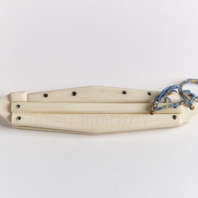
Viking Objects
Reproduction Bone Comb with Runic Inscription
A bone comb with a case with a runic inscription on it. The inscription reads, in translation, “Thorfast made a good comb.” The Vikings had a reputation for looking after their personal hygiene. Combs were an important part of that process, not just for combing your hair but also for removing nits and lice.
Read More
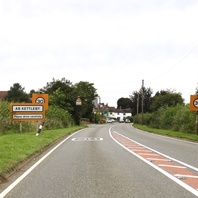
Viking Names
Ab Kettleby
Ab Kettleby, in the Framland Hundred of Leicestershire, comes from the Old Danish male personal name Ketil (Old Norse Ketill), originally a byname related to Old Norse ketill ‘a cauldron, a cauldron-shaped helmet’. This personal name was very common in England. It is compounded with Old Norse by ‘a farmstead, a village’. The affix Ab, which distinguishes the township from Eye Kettleby some four miles to the south, comes from the name of an early owner of the estate, a Middle English Abbe (either from the Old English male personal name Abba or the Old Norse male personal name Abbi).
Read More
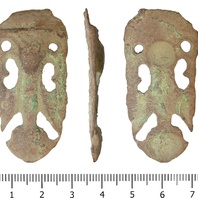
Viking Objects
Tongue-Shaped Strap-End (DENO-1268B3)
An incomplete, copper-alloy strap-end with anthropomorphic designs. These types of strap-ends were popular in both Scandinavia and on the Carolingian continent between the 9th and 10th centuries and were regularly used to embellish baldrics. Strap-ends came in various styles and were fairly common throughout the Viking world. They were used to decorate the ends of belts and to stop them getting damaged.
Read More
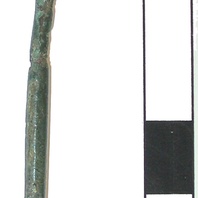
Viking Objects
Expanded-Head Pin (1986/975-AE86)
A copper-alloy pin found at the site of the Little Chester Roman fort. This loose find was found on top of a Roman metalled surface. It has a lozenge-shaped head that is typically Anglo-Scandinavian, but the lack of a secure finds context and its proximity to a Roman surface indicates that it could be Roman.
Read More
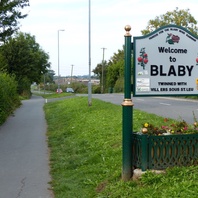
Viking Names
Blaby
Blaby, in the Guthlaxton Hundred of Leicestershire, likely comes from the unrecorded Old Norse male personal name Blár, which appears to be a byname from the Old Norse adjective blár ‘dark’, combined with the Old Norse element by ‘a farmstead, a village’.
Read More
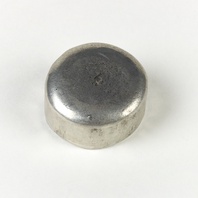
Viking Objects
Reproduction Round Weight
A round lead weight made in an open mould, as shown by the rounded edges of the top which indicate shrinkage in the mould.
Read More
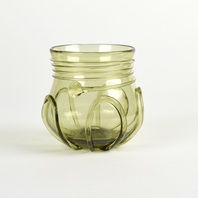
Viking Objects
Reproduction Drinking Glass
A green glass drinking vessel based on one found at Birka and similar to fragments found at St Peter’s Street, Northampton.
Read More
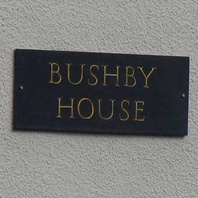
Viking Names
Bushby
The specific element of Bushby, in the Gartree Hundred of Leicestershire, is likely derived from the Old Norse male personal name Butr. Another Old Norse male personal name, Butsi, could also be formally accepted, and this personal name is found in the Danish place-names Busseby and Busserup. It has been suggested that the personal name became confused with Old English busc ‘bush’ or Old Norse buskr ‘shrub’, buski ‘shrubland’. This is a possibility because the neighbouring village Thurnby records a former area of thorn-scrub. The second element of the place-name is Old Norse by ‘a farmstead, a village’, thus Bushby could have the meaning ‘the farmstead of scrubland’ Bushby is now a joint parish with Thurnby.
Read More
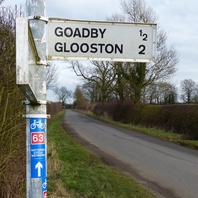
Viking Names
Goadby
The first element of Goadby, in the Gartree Hundred of Leicestershire, comes from the Old Norse male personal name Gauti (genitive singular Gauta), which is either a short form of names in Gaut- or is derived from an original byname meaning ‘a man from Gautland’. The second element of the place-name is Old Norse by ‘a farmstead, a village’. Occasionally the place-name is suffixed with reference to its neighbouring villages Noseley or Keythorpe to distinguish it from Goadby Marwood in the Framland Hundred.
Read More
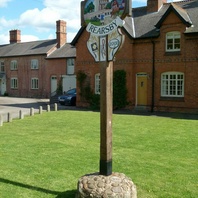
Viking Names
Rearsby
Rearsby, in the East Goscote Hundred of Leicestershire, comes from the Old Norse male personal name Hreiðarr and the Old Norse element by ‘farm, settlement’. The personal name here might be the same as that in Rotherby, Leicestershire.
Read More
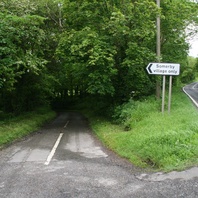
Viking Names
Somerby
Somerby, in the Yarborough Wapentake of Lincolnshire, probably comes from the Old Norse male personal name or byname Sumarliði and the Old Norse element by ‘farm, settlement’. The original byname means ‘the summer traveller’ and is recorded six times in Lincolnshire (all in Lindsey) in the Domesday Book. The spellings in Domesday parallel that of the place-name. Probably identical in origin is Somerby in Leicestershire. Alternatively, the name has been suggested to come from the Scandinavian compound sumar-hlíðar ‘summer slopes’, referring to pastures only used in the summers.
